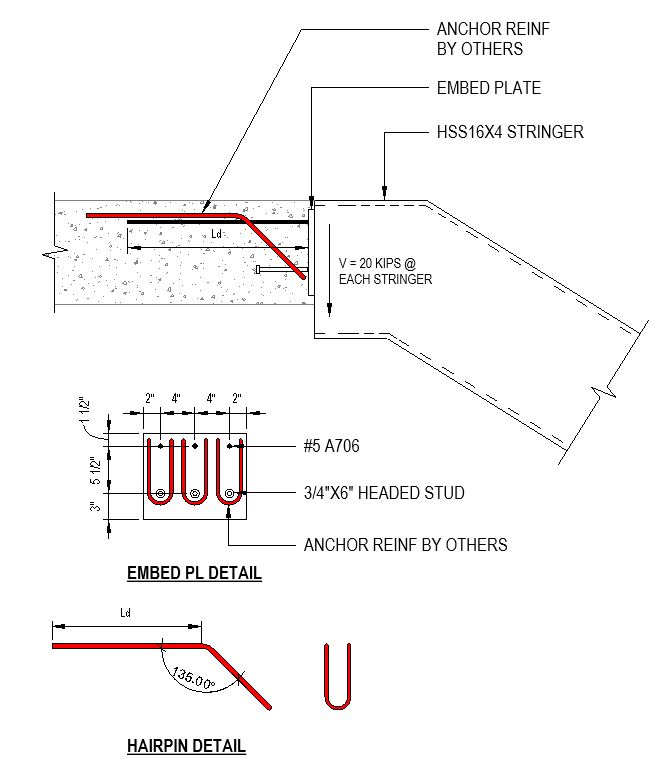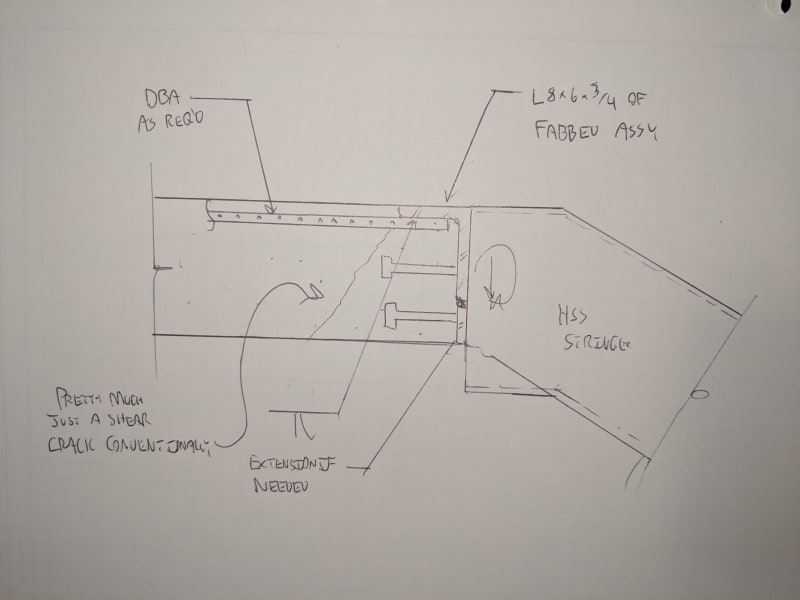T_Bat
Structural
- Jan 9, 2017
- 213
Another separate stair issue,
I've got embed plates to design for a steel stair framing into the edge of a 12" thick two way slab. I'm acting as delegated engineer so the stair is mine - the slab is by others. This is a relatively long monumental stair 18' rise and 33' run in a single span. In my analysis I've assume pinned-roller for the stringer. However, the stringers will be field welded to embed plates. I know there will be some fixity in real life here regardless of how I design it. If I run my analysis with a fixed condition I get a fairly large moment along with my shear (and axial). We are talking on the order of 70 kip-ft moment, 25 kip vertical shear, and 11 kip axial tension. There is no reasonable way I'm going to get an embed to in the face of the EOR's 12" slab to work for this.
Am I overthinking this? Is a pinned condition here in line with standard practice? If not, what would the EOR have to do to accommodate? Add a concrete beam designed for torsion with anchor reinforcing? If I'm on track with looking at this fixed, I want to know what options we may have...
I've got embed plates to design for a steel stair framing into the edge of a 12" thick two way slab. I'm acting as delegated engineer so the stair is mine - the slab is by others. This is a relatively long monumental stair 18' rise and 33' run in a single span. In my analysis I've assume pinned-roller for the stringer. However, the stringers will be field welded to embed plates. I know there will be some fixity in real life here regardless of how I design it. If I run my analysis with a fixed condition I get a fairly large moment along with my shear (and axial). We are talking on the order of 70 kip-ft moment, 25 kip vertical shear, and 11 kip axial tension. There is no reasonable way I'm going to get an embed to in the face of the EOR's 12" slab to work for this.
Am I overthinking this? Is a pinned condition here in line with standard practice? If not, what would the EOR have to do to accommodate? Add a concrete beam designed for torsion with anchor reinforcing? If I'm on track with looking at this fixed, I want to know what options we may have...



